Like many other bike manufacturers, FOCUS are working at increasing the maximum permissible weight of their eMTBs for trail riding. We spoke to FOCUS and DERBY Cycles about developing eMTBs for heavier riders. Read the interview to find out about the hurdles and challenges they’re facing in doing so and where the limits are.

E-MOUNTAINBIKE: We’re happy to see so many of you pitch up for this interview. Before we take a deep dive into the actual topic, can you briefly introduce yourselves? Who are you and what’s your job at FOCUS or Derby Cycles?
Kai: Hi, I’m Kai Fischer, head of the Derby Cycles test laboratory and responsible for the in-house tests, including fatigue tests, roller drum tests, drop and impact tests. I also take care of the setup of the test stands and ensure that all specified standards, external and internal, are adhered to.
Fabi: Hello, my name is Fabian Scholz. I am the lead engineer at FOCUS, which means I’m responsible for the technical solutions and achievements. I have to keep an overview of all the projects and coordinate them. Together with Kai, I take care of the internal tests that our bikes are put through.
Patrick: Hi, I’m Patrick and I’m responsible for the marketing of FOCUS. But actually I do a little bit of everything.


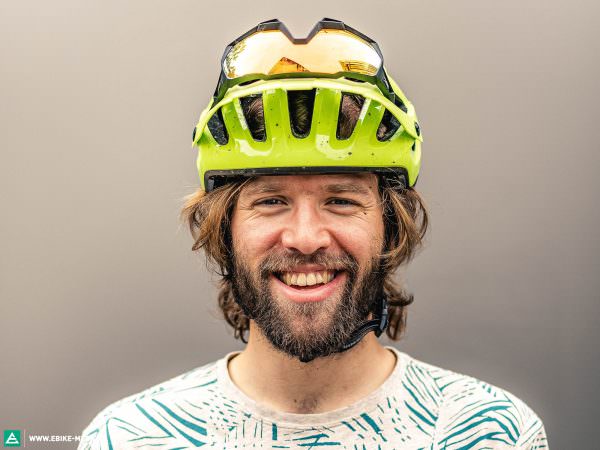
E-MOUNTAINBIKE: You all started a project on the subject of maximum permissible weight in cooperation with the Technical University of Hamburg. You’re looking at the forces exerted on eMTBs on the trail and the actual loads that are placed on them by heavier riders. How did it come about and what are your reasons for it?
Patrick: We see the development of the maximum permissible weight as an important process. We want to allow everyone to ride FOCUS eMTBs and not exclude people who are below or above certain averages. That is why it’s one of our goals to increase the maximum permissible weight of our eMTBs to 150 kg.
Kai: Since, with these kinds of loads, you can’t simply extrapolate the data you get from the test bench and expect to get meaningful results, we carried out test rides with heavier riders to collect real world data. We used this data as a sensible and realistic reference point for later tests on the test bench. We’ve already done tests which showed that the forces exerted on a bike aren’t always that what you’d expect, with urban ebikes for example. From this experience, it was clear to us that we would also have to carry out real-world load measurements for eMTBs on which we could orientate our in-house tests.

E-MOUNTAINBIKE: There are already tests in place that ebikes have to pass before they’re allowed to come onto the market, ISO 4210 and EN 15194. Is it even necessary to carry out additional tests?
Fabi: We test according to these standards and we’re already exceeding them, but we demand more of our eMTBs than the standards specify. In reality, it makes a big difference whether you define the maximum permissible weight of 150 kg with a more passive rider or an aggressive, active rider. You’ll have different loads occurring on a leisurely ebike ride around the lake than on demanding single track or in the bike park. We are of the opinion that these differences can only be mapped with actual test rides, which is why we decided to do our own in-house tests. For this project, we’re concerning ourselves with aggressive trail rider who occasionally spend a day in the bike park. Our measurements have shown that eMTBs have to withstand up to 50% higher loads on the trail than the current standard prescribes.
It turned out in our measurements, that E-MTBs experience up to 50% higher loads on the trails, than the current norm prescribes.

E-MOUNTAINBIKE: Does that mean that there is currently no standard that was specially developed for eMTBs and which in any way reflects the demands of trail riding?
Kai: No, there is currently no standard for enduro and downhill purposes, and certainly not with regard to the maximum permissible weight. I’m a member of the DIN standards committee, where I am actively committed to developing standards for mountain bikes and eMTBs. There is currently not the case for this sector and therefore no uniform test methods for the industry. We’re starting to make progress, but developing such standards simply takes time. One problem here is that there is no linear relationship between the rider’s weight and the load on the bike. We’ve also already carried out tests on participants who were too heavy for your normal household scale and also for the bike. In some cases they recorded the lowest dynamic loads. On the other hand, the static preload increases with heavier riders and the braking loads are above average. But if I ride aggressively and lets say I weigh 100 kg, I can put significantly higher loads on some areas of the bike. Overall, it’s hugely dependant on how you ride and what you use your ebike for. To be on the safe side, you always have to reckon with the heavier and at the same time very active rider, which is why there is always a certain buffer that we take into account. However, it is difficult to precisely define this across the board.
E-MOUNTAINBIKE: What does your approach and test setup look like in practice?
Fabi: First off, we defined three test routes, a cross-country route, a single track circuit and a bike park track, which covers about 95% of the various loads that can occur when riding an eMTB. The different loads that occur while sitting and standing on uphills and downhills are just as important, so that we map as many different scenarios as possible. We ran our tests on the JAM2 9.9 Drifter with the T.E.C. Pack attached which came to a total bike weight of 25 kg, including the measuring devices.
Kai: After that, we set off on our test tracks with two riders who weigh 125 kg including their kit and backpack, and one rider who used to be a dirt jumper and weighs 115 kg including his kit. We made sure that the three test subjects have different riding styles and that we included significantly more aggressive and faster riders and slower ones, as the riding style has a significant impact on the stresses put on the bike.
Fabi: As a reference, I also took part with my 71 kg and rode the routes as fast and aggressively as I could. What Kai mentioned earlier is exactly what happened. Although I am by far the lightest test rider, my riding style generated the highest loads in some situations.

Despite me being the rider with the lowest weight throughout the test crew, i was able to generate the hightest loads on the bike with my aggressive riding style.
E-MOUNTAINBIKE: Are there any other findings from your test? Or things that surprised you?
Fabi: Yes, the braking loads that occurred were extreme, especially on the fork. And the seat posts were also subjected to very high loads. On the other hand, the loads we measured on the handlebars were comparatively low. The old standards are completely sufficient here, although the handlebars have become wider. We were using 760 mm and 780 mm wide handlebars in our test.
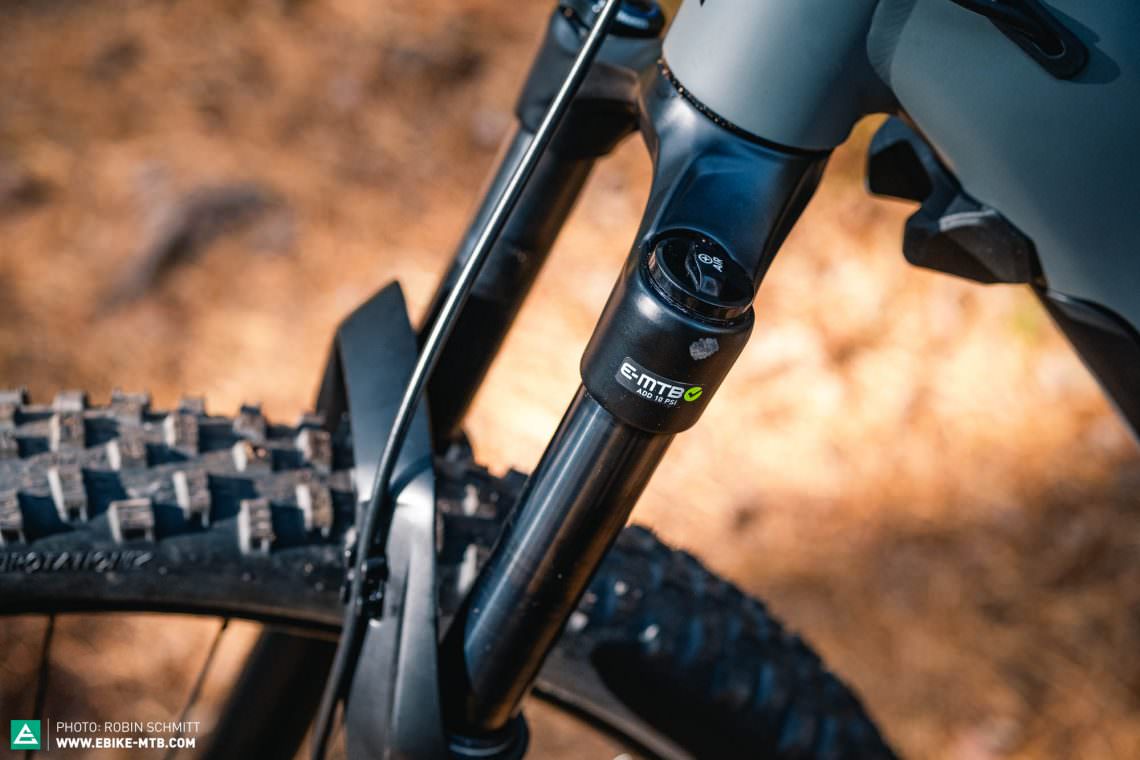
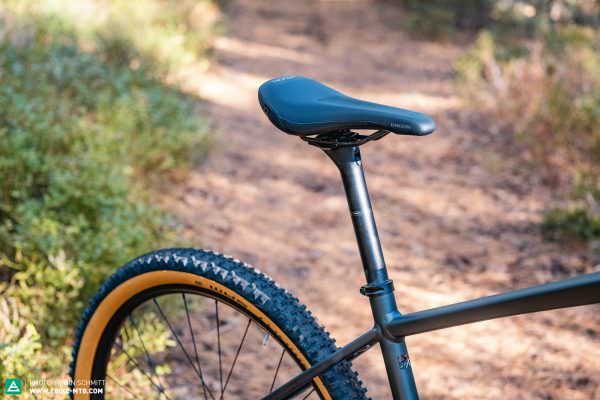
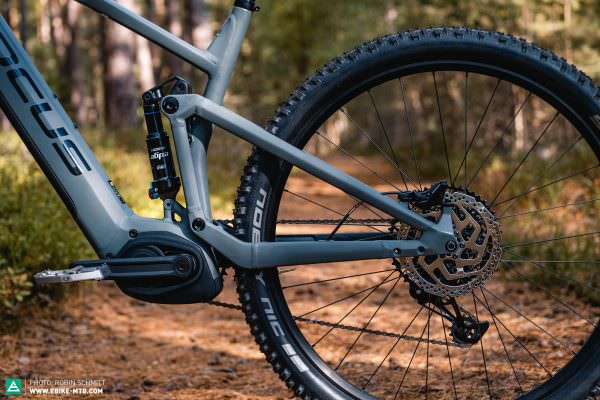
E-MOUNTAINBIKE: In your experience, which components are currently the biggest limiting factors of the maximum permissible weight?
Fabi: Regarding the individual components, it’s clearly the seat post, fork and shock. We test everything independently of the manufacturer and according to our internal standards, even if the component manufacturer approves their products for the intended maximum permissible weight. We’ve previously had to remove some manufacturers from our suppliers because the components didn’t meet our requirements on the test bench. However, from my point of view as an engineer, the components are only one factor. The kinematics of the rear end are another challenge. Developing rear suspension that works just as well for a person who weighs 65 kg as it does for someone who weighs 125 kg is actually not feasible. It’s difficult to cover the full spectrum of riders with one bike. With heavier riders you also quickly reach the limit of the maximum allowable air pressure in the shock and fork. In that case, depending on the rear end, the rebound and compression might not allow for sufficient adjustment for the eMTB to perform adequately.
Kai: Many component manufacturers are lagging behind current developments due to the lack of standards. Sometimes, they’re overwhelmed by the requirements we have of components.
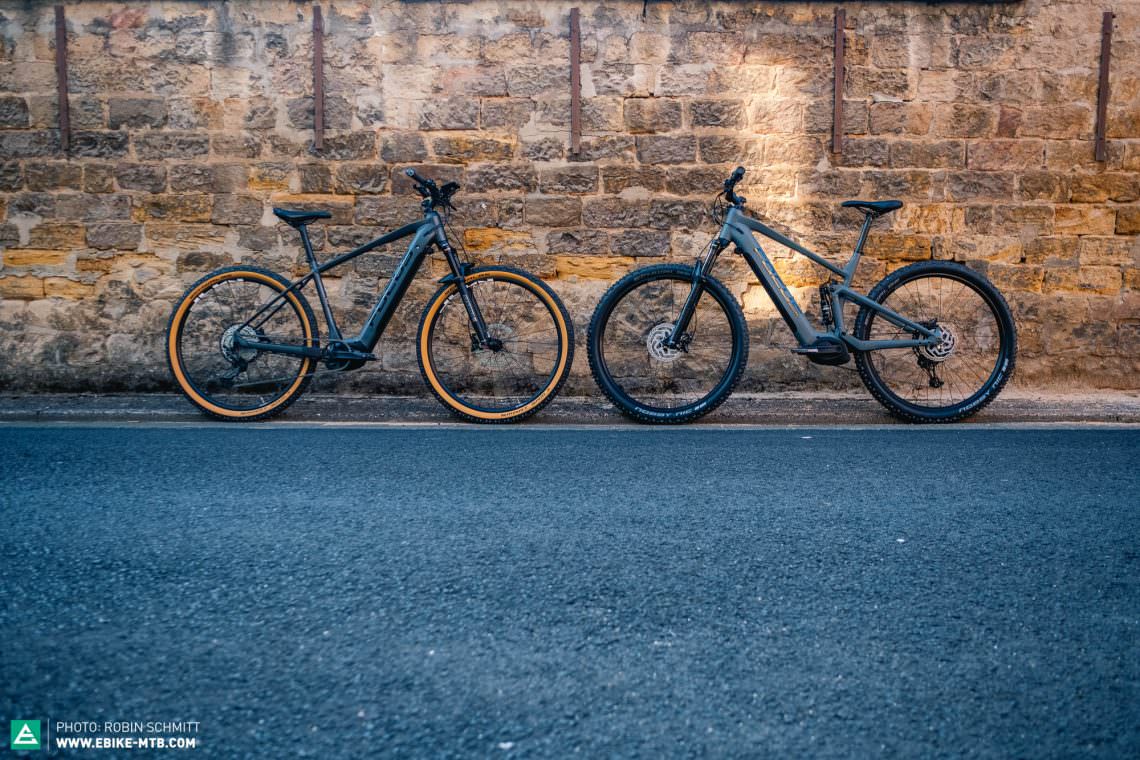
E-MOUNTAINBIKE: Are hardtails the solution then?
Fabi: Of course, it would be easy to say, then we’ll just develop hardtails but that doesn’t solve all problems either. And honestly, who wants to ride the trails aboard an e-hardtail? The fun and performance of a full-suspension bike is on a completely different level. From our point of view, hardtails are not the solution. We want to enable a broad spectrum of people to have fun on the trails with our eMTBs. This also means that heavier people should be able to ride the same products as lighter people.
E-MOUNTAINBIKE: What is your solution then?
Fabi: We’ve been having lot of discussions with suspension manufacturers such as FOX, RockShox and SR Suntour and we’re pushing the topic. We are already well on the way here with suspension forks. It’s more difficult with shocks because the problem depends not only on the shock but also on the rear linkages of the individual bikes and their kinematics. The best solution from an engineer’s point of view is actually to adapt the kinematics to each frame size and rider weight. However, the whole thing is very difficult from an economic point of view as it would make eMTBs much more complex and expensive. First of all, we want our customers to understand the importance of the type of rider they are and how they’re going to use their ebike. If the customer knows the kind of terrain he or she will ride in and what type of rider he or she is, that already takes us one step further. It may help just to find a bike with a maximum permissible weight and intended use that’s suitable to the rider.
E-MOUNTAINBIKE: Can you explain the connection of the maximum permissible weight with the intended use of the bike?
Fabi: The maximum permissible weight always refers to a bike model that is made for a specific purpose and approved by the manufacturer. The intended use defines what you’re allowed to do with the respective bike, how high you’re allowed to jump, if you’re allowed to jump at all etc. Of course, this always has a direct influence on the maximum permissible weight. An ebike is subject to completely different loads in the city than in the bike park and on downhill tracks. This is also one of the reasons why the maximum permissible weight of city and trekking ebikes on the market is higher than that of many trail eMTBs.
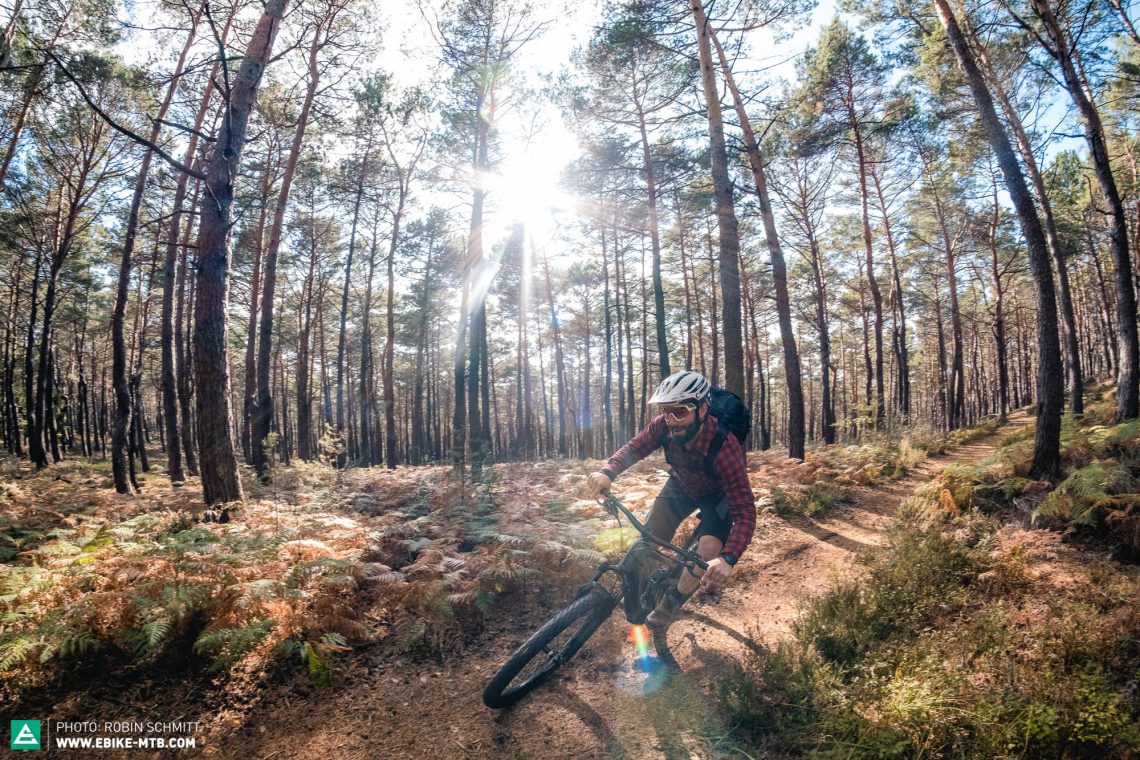
E-MOUNTAINBIKE: Where do you see the maximum permissible weight of eMTBs in the next few years?
Fabi: For me to make a reliable statement on that, I would need significantly more data from several riders on several bikes. When I look at our current data, I see the maximum permissible weight with an active riding style reach its limit at 150 kg. To go beyond that, we would have to develop frames and components that are much more sturdy and design them differently. This would make the bikes much heavier and we would have to be content with eMTBs that weigh 27–29 kg. The question is who really wants to ride such a heavy bike.
E-MOUNTAINBIKE: One final question: is damage to eMTBs due to excessive payloads a real burden? In other words, do you have warranty claims that are due to the rider exceeding the maximum permissible weight?
Fabi: No, I am not aware of a single case. However, the bikes are still relatively new on the market, so we have no long-term data. But we don’t wait and see what happens, we want to make our bikes as safe as possible. In the case of warranty claims, it’s not always possible to determine how heavy the rider actually is or what they did with the bike.
Thank you for the chat, it was very informative. We think it’s an important topic and we’re happy that there are people like you who deal with it so intensively in an effort to advance the bike industry.
For more information about FOCUS Bikes click here: focus-bikes.com
Text: Jonas Müssig, Illustration: Julian Lemme, Pictures: Focus, Robin Schmitt
Did you enjoy this article? If so, we would be stoked if you decide to support us with a monthly contribution. By becoming a supporter of E-MOUNTAINBIKE, you will help secure a sustainable future for high-quality cycling journalism. Click here to learn more.
Words & Photos: Jonas Müssig, Julian Lemme









